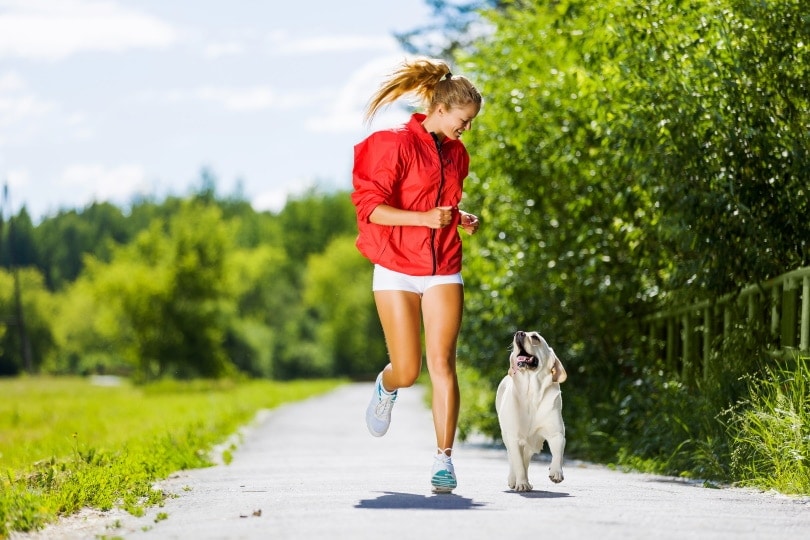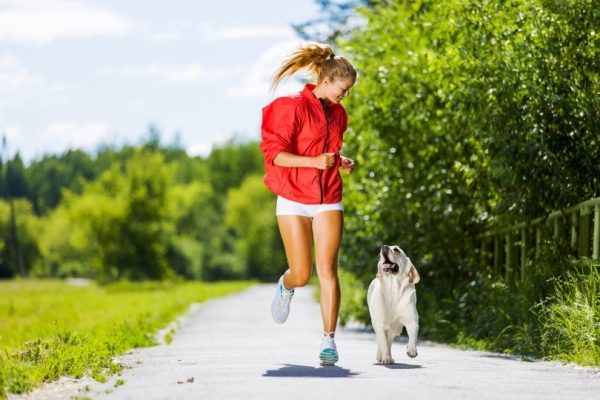Click to Skip Ahead
We see videos of dogs running on the beach, chasing one another in the yard, and jogging along a trail with their human. One thing is for sure: they are having a wonderful time. Dogs love to run, and it is good for them, right?
Well, that depends on the dog. You will need to consider a dog’s build, health, and breed before taking them for a run.
Is Your Dog a Runner?
Before you decide to make your dog your new running partner, you will need to consider whether running is something you can engage in with your dog.
For instance, brachycephalic breeds like Bulldogs, Pugs, and Frenchies may find it difficult to breathe due to their facial structure. Flat-faced dogs have airways and nostrils that are narrow, which may make it difficult to breathe if running for a long stretch compared to chasing a ball or running after the kids in the yard.
Older pets or pets with health issues may find running uncomfortable, or it may be difficult for them to keep up. With puppies and larger breeds, there are always the risks of hip dysplasia or bone damage.
You should consult your veterinarian before you begin running or training with your pooch. Your vet can help you to decide on a program and recommend any adjustments that may be necessary as you increase your pets’ exercise routine. If you have a puppy, the vet will determine if their growth plates are sealed up and they can safely begin to run. This is especially important when it comes to larger breeds like the Great Dane.
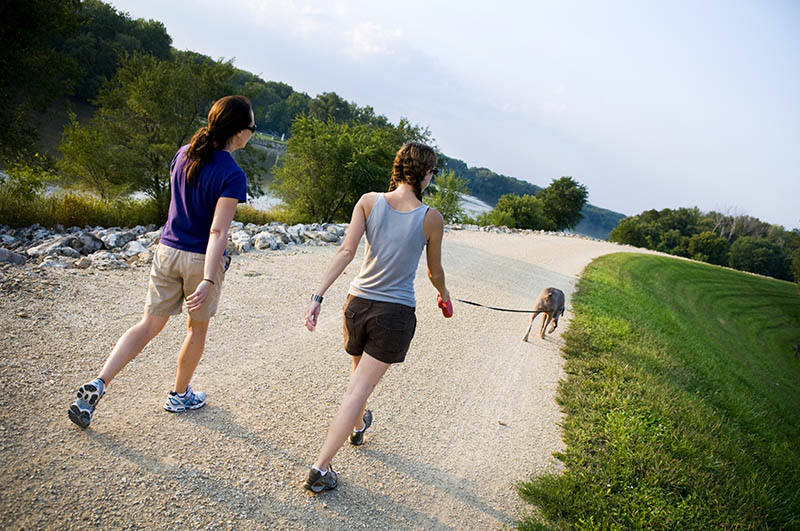
The Importance of Running
Physical exercise is essential to keeping your dog physically fit. It keeps their joints and muscles flexible and strong. It also helps them to maintain a healthy weight and reduce the risk of health problems associated with obesity. You should turn it down a notch if you notice that they are uncomfortable or stiff after a running session. Just like your muscles, your dog’s muscles require training in gradual increments.
Releasing excess energy is an excellent way to help your dog reduce anxiety and stress. In fact, when they exercise, their body releases endorphins that help to improve their mood and demeanor overall. Yes, exercise makes your dog feel happy!
In addition to the physical benefits of running, it can help to improve their social skills. When you take your dog for a run, they encounter other runners and dogs. It allows them to make friends with others and helps to reduce feelings of loneliness and isolation. Well-socialized dogs tend to have fewer behavioral issues like aggression since they are well-adjusted and confident.
And lastly, running allows your dog to experience new sights, smells, and sounds so their minds stay active and alert.
The 8 Tips to Get Your Dog Running
1. Start Slowly
Once you and your vet have determined that running would be beneficial for your dog, start slowly. Like humans, dogs are at risk of injury if they do not slowly and safely increase their activity. A program combining running and walking will give you and the dog a chance to catch your breath and actively recover.

2. Be Sure to Warm Up
Before you begin running with your dog, be sure to walk or slow jog for a few minutes. It is essential for you and your dog to warm up your muscles to help prevent injuries. Part of the warmup routine can include allowing your dog to sniff the area and relieve himself so you can keep moving and not have to stop for pee breaks.
3. Choose to Run on Trails
Since asphalt can be hard on your and your dogs’ joints, head for the trails. Dirt trails are better for his paws and joints and for your joints too. Besides, your dog will enjoy the sounds, sights, and smells of a trail over the neighborhood roads and sidewalks.
Be sure to check the park rules to be sure dogs are allowed and if they can be off-leash. It is also important to find out about the area where you will be running. What types of animals will you encounter? Are there any that may harm or kill your pet?
It is also important when running in the woods or grassy areas to protect you and your pet from fleas and ticks. And, if one of you does get bitten by a tick, carefully remove it and call your doctor or vet for further instructions.
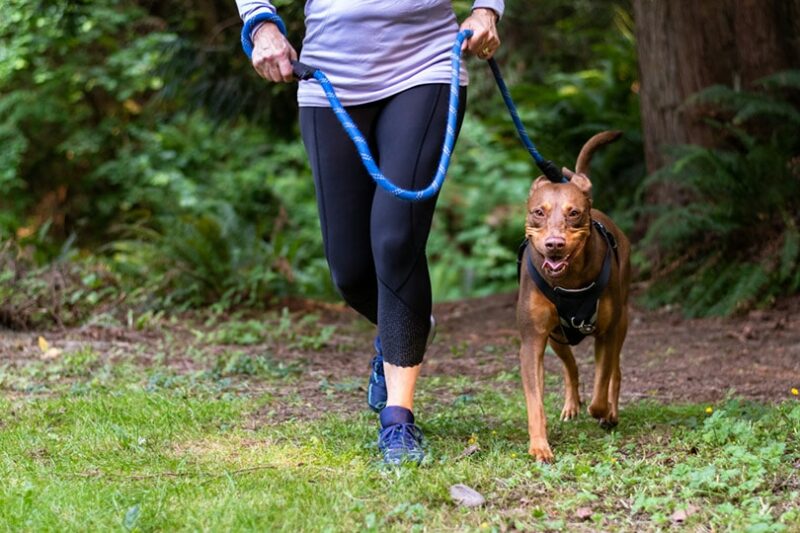
4. Go Over Basic Commands and Training
Before deciding to make your dog your running companion, they should be able to walk properly on a leash. They should not be able to pull or run ahead of you. You also do not want to allow them to sniff and mark everything along the way.
Another important command is “Leave It.” You want your dog to listen and not eat everything in sight, like roadkill and trash. Your dog should “Sit” and “Stay” on command so they can be safe in traffic areas.
And, if your dog is not easy to train, you may want to hire a professional before taking them for runs.
5. Take Breaks
Since a dog cannot tell you when they are thirsty, it is important to stop about every 10 to 15 minutes for a water break, especially during the summer months. After a while, you will have a better idea of your dog’s water needs.
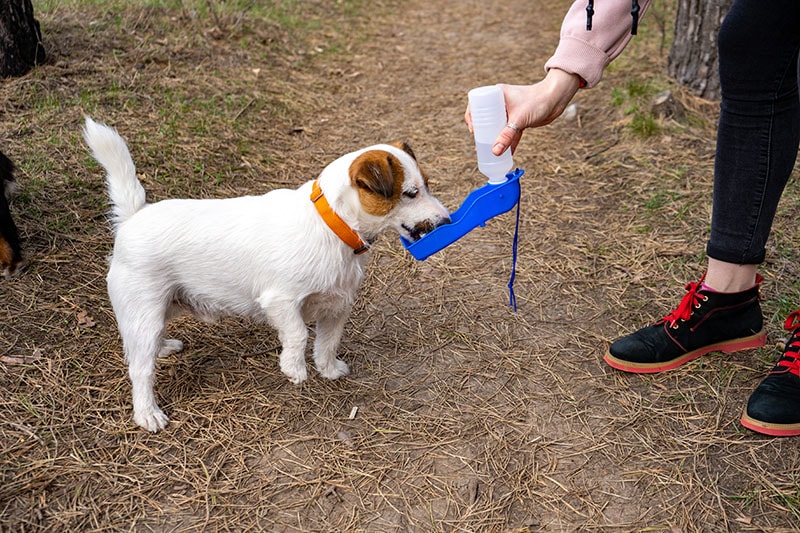
6. Avoid Running in the Heat
Since humans do not have fur and we can sweat, we do not overheat as easily as our canines. Avoid running with your pet in the midday heat or when the temperatures are high. Also, remember that sand, asphalt, and blacktop can burn a dog’s paws. You should assess the running ground by putting your hand on the surface for about 10 seconds. If it feels hot to you, it will be hot for your pet. We suggest you find a shady place to run.
7. Monitor Your Pooch
While on a run with your dog, be sure to watch for signs of overexertion or heat stroke. Signs like excessive panting or drooling indicate that your dog needs a break, so allow them to stop and catch their breath. If they are overheated, give them air-temperature or cool water to drink. You can also pour some water on their body and head to help them cool down. However, do not let them drink too much or too fast during or after exercising. Swallowing a large amount of air can cause bloat. Do not force the dog to continue if they stop and refuse to move.
Lethargy, vomiting, and dark red gums are signs of heatstroke. You should attempt to lower your dog’s body temperature gradually by wetting them and placing them under a well-ventilated shade while making your way to the emergency vet.
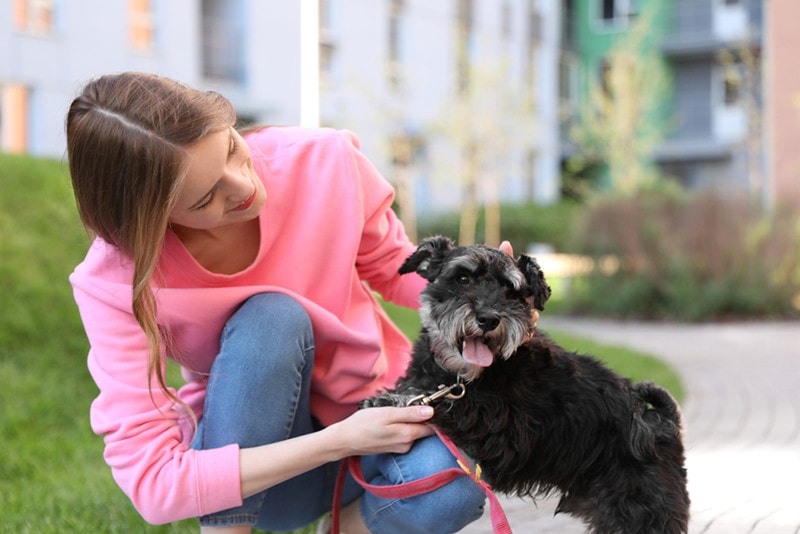
8. Designate a Poop Spot
Before and after a run, give your furry friend a chance to relieve himself. Take him to the same spot and eventually he will “go” on command. Be sure to remember to take poop bags along and clean up after your pooch.
Conclusion
So now that you know the benefits of running with your dog and hopefully your dog knows how to run on a leash, you may have yourself a faithful running companion. And one that will bark and wag his tail in excitement at the sight of his running leash. However, we suggest that you make that decision with the advice of your veterinarian.
Featured Image Credit: Sergey Nivens, Shutterstock

